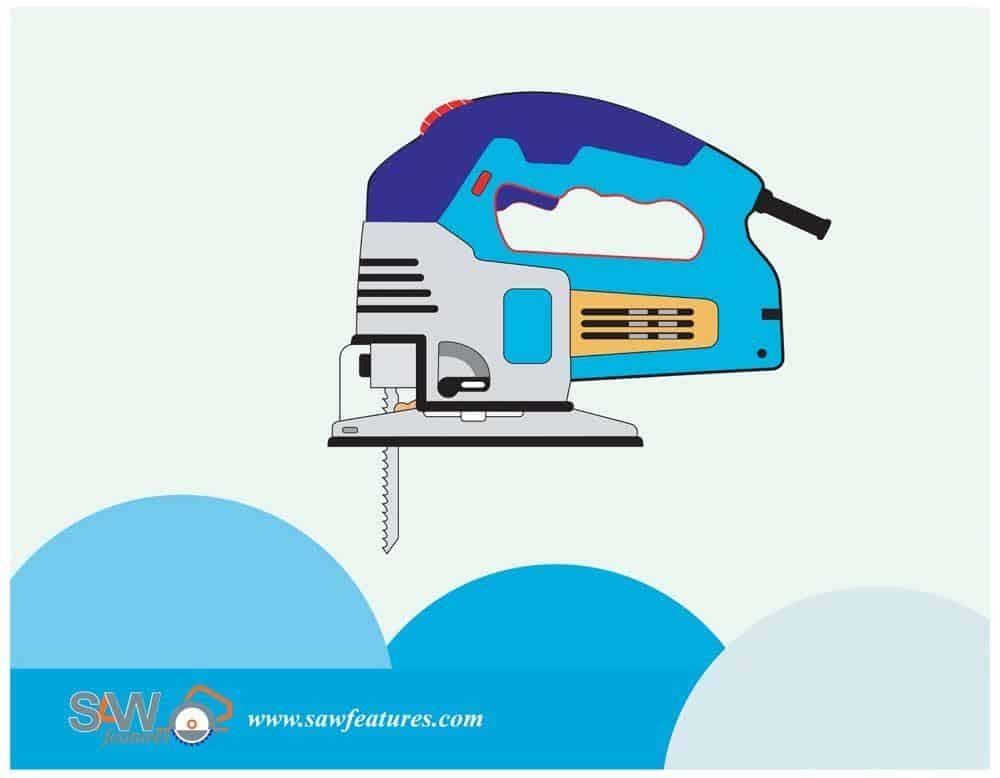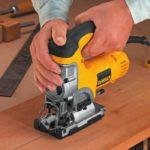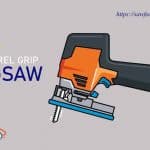What a handy tools! Corded or cordless jigsaw is an almost essential tool for any woodworking or DIY project. However, Jigsaw suitable for wood, metal, fiberglass, and plastic. Here we have published the infographics with an article on how to use a jigsaw.
No matter what type of cutting task you have, whether you have straight lines, bevel, or curves. You demand some power saws. If you have one power saw in your workshop, let it be the more faithful Jigsaw. As power tools go, next to your miter saw, replicating saw, drill driver, It's Probably one of most reached of your devices.
Let's not forget a profectional jigsaw corded or cordless doesn't have just a cutting tool it has bevel capacity, multiple speed, dust management, and many other features.
4 easy steps to use a Jigsaw
We have collected all the necessary information and put it this article with infographics. If you follow all the 4 easy steps and tips below, your DIY or cutting task will be perfect and eye-catching.
You are a beginner, or novice doesn't worry. We hope you most learn something different in the article how to use a jigsaw.
Let's start with us.
Step 01: Initial Preparations
- Read the manual before you start: Unboxing your new jigsaw. It is necessary to read the manual before you start.
- Safety first: You must: Cover your mouth and nose with a face mask before making your cutting task. However, inhaling any dust.
Step 02: Prepare your workpiece
- Hold your workpiece: Hold your workpiece: Make sure the lumber of workpiece is safely Hold on work surface. Moreover, there is nothing underneath the lumber that will likewise get cut by the cutting edge.
- Draw the cutting line: Measure and make a cutting path on your workpiece. If you have a straight cut using a roller and round or ellipse, Use a straightedge of a compass to track the path you need to follow with your jigsaw.
Step 03: Prepare your Jigsaw
- Choosing and mounting the right blade: Choos the best jigsaw blades according to your cutting needs, such as wood, metal, PVC etc. — Remember, High carbon steel (HCS) blades for wood and PVC and mounting it.
- Plug-in or Battery pack: Plug the power cord. If the is a cordless jigsaw, Insert the battery for its power source.
- Press the trigger: Press or Pull the power trigger and stay for ruling full edge speed and keep it held down until finished cutting needs.
- Guide the blade: Push the blade through the material of your cutting task. Go slow at first, following along with the path you want to cut.
| You may rely on it for know the Principal Of A Jigsaw Blades
Step 04: Start your Various cuts
- Miter Cut: Angled cut on the face of the lumber. Miter cuts made by pushing the flat on the table at an angle to the blade.
- Compound cut: It’s a combination of a miter and a bevel cuts. However, it makes Two angled cuts, one across the face of the lumber and other the edge or end of it.
- Rip Cut : Cut parallel to the grain of the lumber
- Crosscut: Cut perpendicular to the grain of the lumber. However, it’s a straight cut, as long as the lumber is not too wide or thick.
- Bevel cut: It’s an angled cut to the edge or end of the lumber. You will use it to make a corner of a Frame. Jigsaw makes an angled cut, but only in thin materials.

How to use a Jigsaw: infographic
Jigsaw safety tips: Stay safe when using your Jigsaw
- Safe yourself: It’s a huge mistake not to wear eye protection and mask. A Jigsaws make dust when it is on cutting tasks. The user leans over the cutting path. It puts your eyes directly in the trajectory of flying chips, splinters, and sawdust. You must use a mask on your mouth and nose, goggles on your eye to keep protect yourself.
- Save your power cord: when you’re using a corded jigsaw Be wary about where your power cord is. Keep it far from the cut line. See to it you have an extension lead that’s long enough to move.
- Check the blade: Before start, your cutting task with a jigsaw, confirm the blade is sharp. A dull blade requires more force. Which can lead to a kickback and lack of control.
- Use narrow Blade: When cutting tight curves, Use a thin blade and go slowly. Otherwise, the blade may be causing the tool and snap. Make sure that the blade is perfect for the type of material being cut.
- Start Slow: When you start, keep the speed dial on the slowest. Slow start ensures that your job doesn’t go wrong in the beginning.
- Check Clamps: Make sure that both clamps are fit tight to avoid the piece from slipping.
- Secure the footplate: Footplates are rotating, providing users to cut angles — locks the footplate in place and double-check that it is as tight as possible. As a rule, If you ignore this step, the screw will swing loose as I run the jigsaw, and the plate will rotate messing up my cut.
- Cut from outside to inside: Start cutting away the mark surrounds the outsides of the wood pieces. Keeping the work in place until the end helps to keep the pieces in place and prevent breakage.
- Orbital action seating: When starting your cutting you should ensure to Adjust the orbital action on the side of the jigsaw
- Take time when cutting tile: Then use a corresponding tile blade and clamp the tile securely to avoid shifting. When you Cutting tile with a jigsaw, it will force your patience. Go slow and let the blade do the work.
- Go slow when ending: It’s more secure When ending your cutting task go slow it help you keep the pieces in place and prevent breakage.
FAQ
Yes, it can. However, the size above which it can’t customarily cut is ¾ inches and in some blades can only cut a ½ inches wood material.
A jigsaw is not defined for that cutting. If you want to cut 2×4 size hardwood various type of cuts, you can use a miter saw with a saw table.
In effect, a powerful jigsaw can cut plastic, thin metal, PVC, Pipes, Laminate board, Non-ferocious metal, tile, softwood, and Hardwood.
It depends on the type of the jigsaw blade. By and large, Up to ¾ inches is The average thickness which a jigsaw can smoothly cut of Hardwood, material and little more of softer wood.
The Last Paragraph
A jigsaw is a handy way to cut curves and shapes in thin materials, consisting of wood, Laminating board, PVC, tile, metal and Hardwood.
Hopefully, Our guide will help you get up to speed with using a jigsaw. If you get the right precautions and avoid simple mistakes, the jigsaw can safely make you the master of any type of cut. Remember a jigsaw must be used carefully. However controlling the force, adjust bevel and footplates.
There are many types of saws on the market for woodworking and DIY project. They are still very affordable tools outside of Jigsaw. Circular Saw, table saw, Compact circular saw, Miter saw most of them. You should know about them farther if you want to be a professional DIY.






